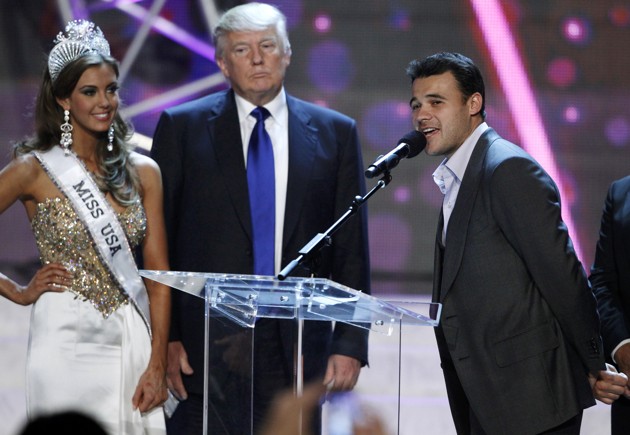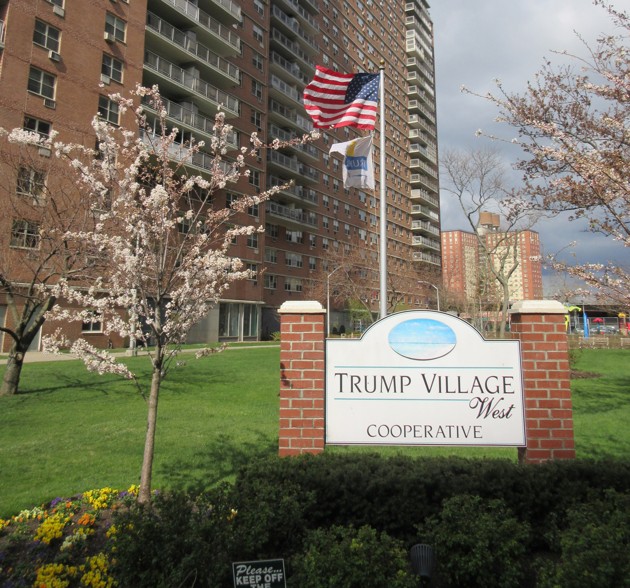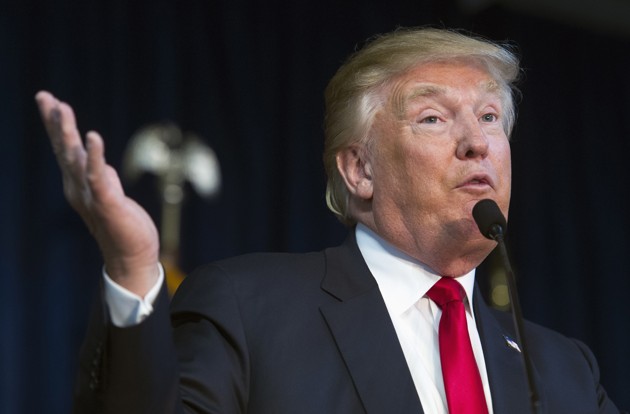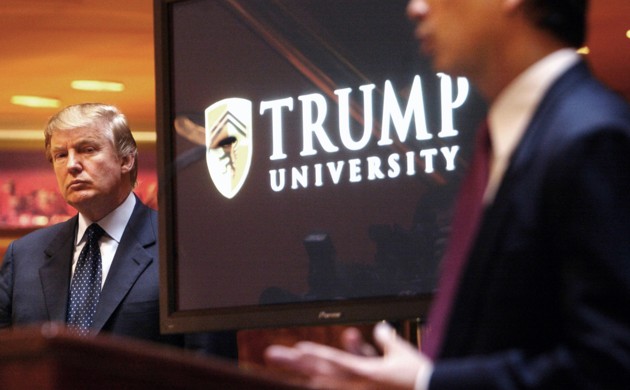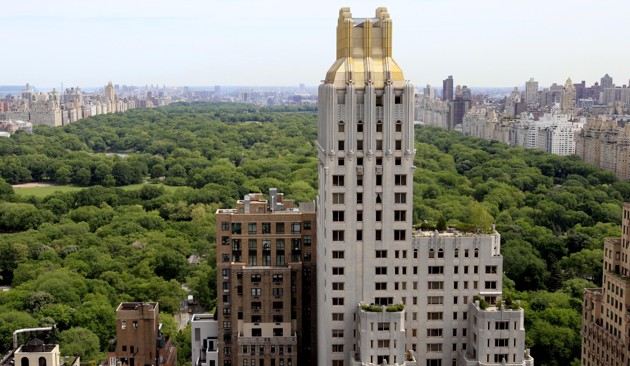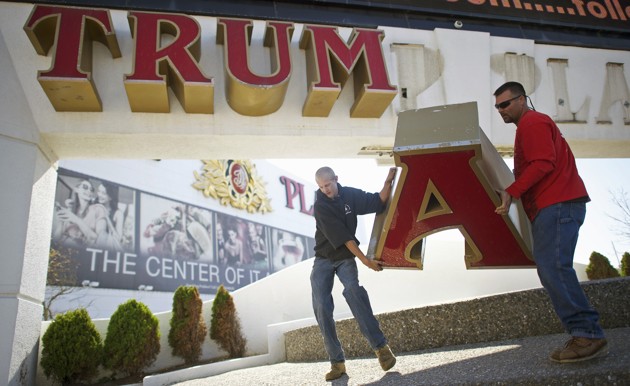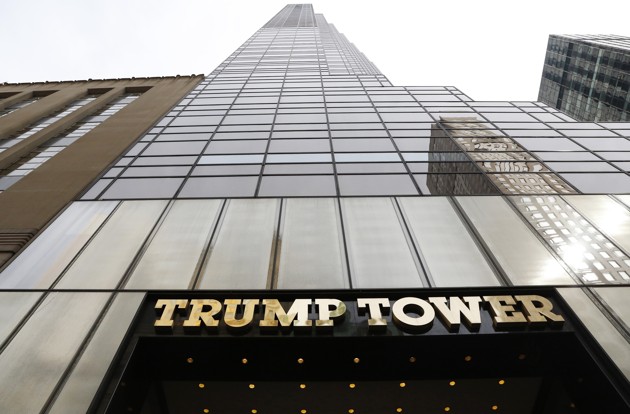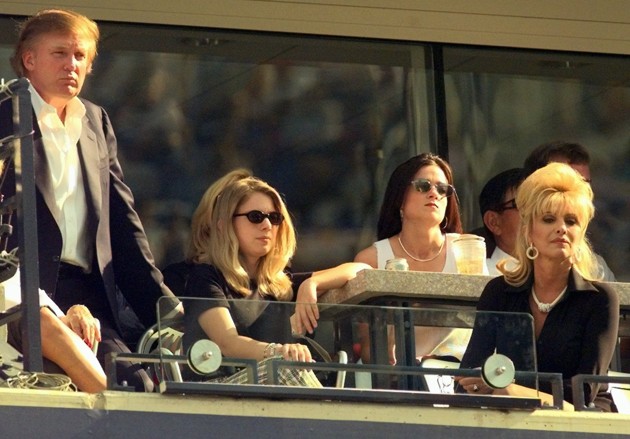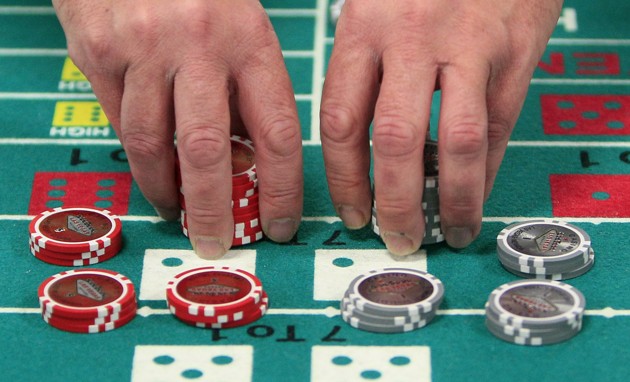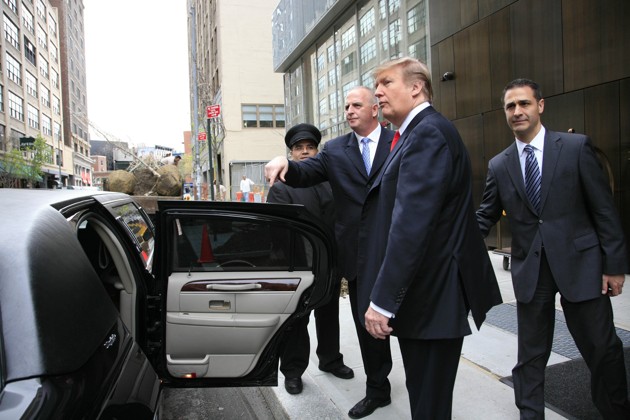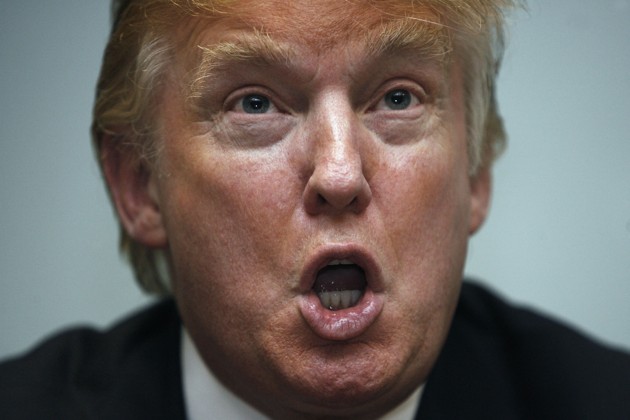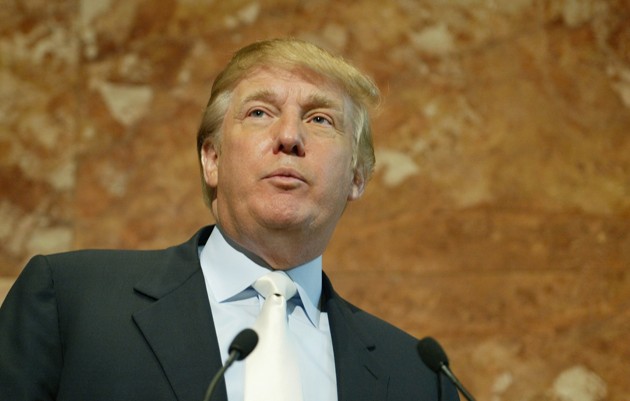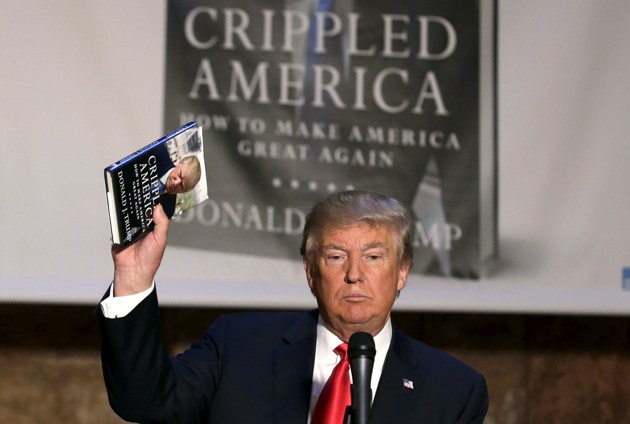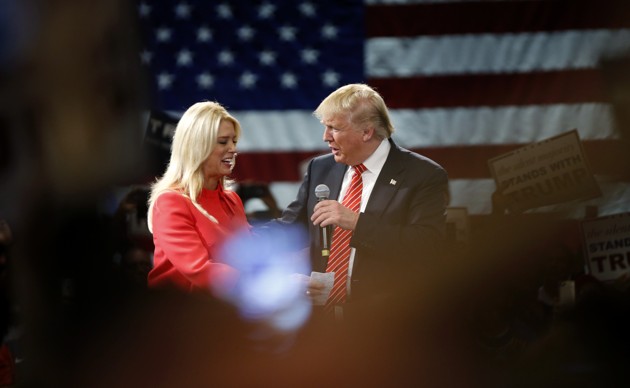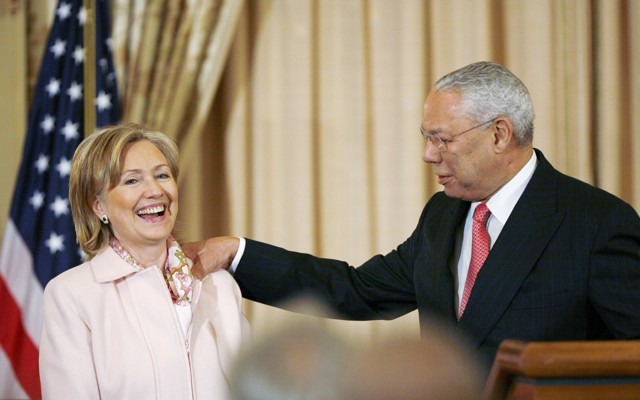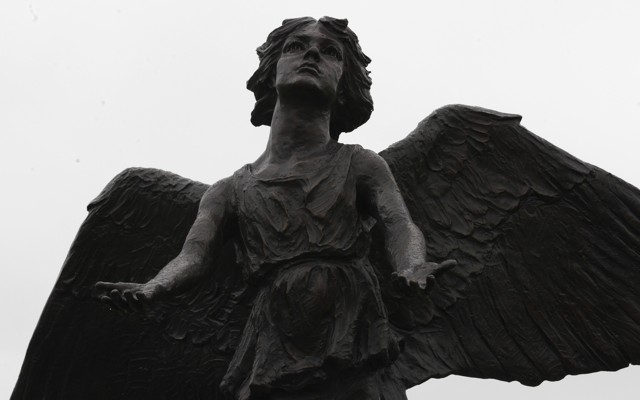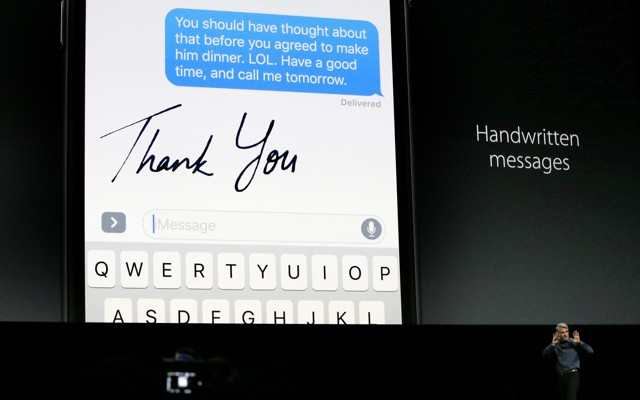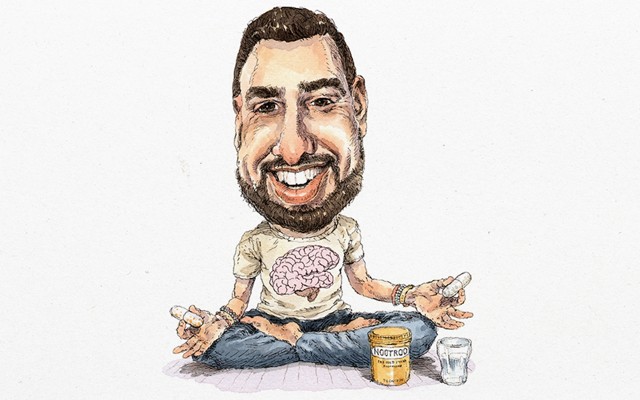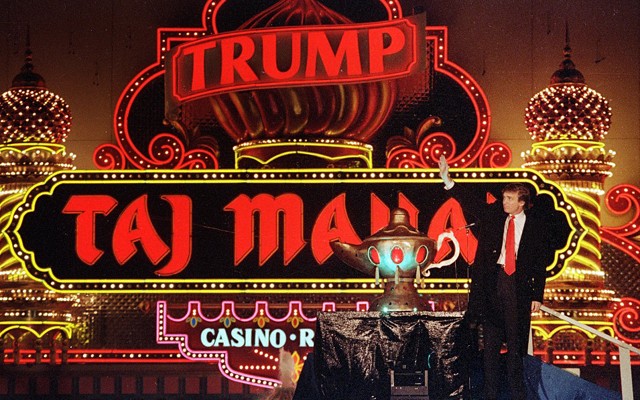The Many Scandals of Donald Trump: A Cheat Sheet
New York’s attorney general is reportedly investigating the Donald J. Trump Foundation to see if it broke laws governing nonprofit charities.

Ads are being blocked
For us to continue writing great stories, we need to display ads.
Un-blockLearn moreDonald Trump’s foundation isn’t just a political issue anymore—it’s a legal one.
New York Attorney General Eric Schneiderman is now investigating the Donald J. Trump Foundation, Politico reports, “to make sure it’s complying with the laws governing charities in New York.”
Of course, all high-profile investigations are political, too, and this one is no exception. Nor is it a shocking development. A series of stories in The Washington Post and elsewhere in recent weeks have shown inconsistencies and possible violations of law at the charity, and watchdog groups and Democrats have begun calling for investigations into it. Schneiderman, meanwhile, is a Democrat who has already been investigating the so-called Trump University, the real-estate seminars that former students have called a scam, and he has acquired a reputation for pursuing splashy investigations. Trump, for his part, has called Schneiderman a “total lowlife” and “a sleazebag.”
The investigation is a new political headache for Trump. The Republican has sought to make hay out of accusations against the Clinton Foundation, but so far that group has no legal troubles. Trump’s charity, however, now finds itself in legal jeopardy.
The Trump Foundation made an illegal gift to a group backing the reelection of Florida Attorney General Pam Bondi. Critics have argued that donation was a quid-pro-quo, as Bondi’s office soon afterwards dropped its own inquiry into Trump University, but both Trump and Bondi deny this. In any case, nonprofits cannot give to political campaigns, and the Trump Foundation had to pay a $2,500 fine to the IRS. In a letter dated July 15, obtained by NBC, Schneiderman requested details and documents related to the donation, as well as specifics of a May 11, 2016 training session and any other training the foundation conducted to ensure it will not use its funds for political purposes in the future.
Post reporter David Fahrenthold, meanwhile, has shown that Trump’s charity was mostly a pass-through for other people’s money, with the entertainer giving little to it. On a couple of occasions, it appears that the foundation shelled out five figures to buy items that went to the Trump family, including a large portrait of Donald Trump and a football helmet signed by Tim Tebow. That would appear to violate IRS rules against “self-dealing,” or using charities to purchase items for one’s self.
The Clinton-aligned watchdog group Citizens for Responsibility and Ethics in Washington has filed both criminal complaints and a complaint with the IRS about the Trump Foundation. Democrats on the House Judiciary Committee on Tuesday asked the Justice Department to investigate Trump’s donation to Bondi. In at least a few cases, the foundation also reported gifts it did not make.
In a statement, Trump spokesman Jason Miller called Schneiderman a “partisan hack,” and dismissed the investigation as “another left-wing hit job.”
The 2016 presidential election could be the most scandal-plagued match-up since James Blaine’s allegedly corrupt business deals squared off against Grover Cleveland’s alleged illegitimate child in 1884. On the Democratic side, Hillary Clinton is the nominee, bringing with her a train-car’s worth of baggage. But the Republican candidate is at least as saddled with controversy as Clinton is—and while many of the Clinton cases involve suspicion and shadowy links, many of Trump’s are fully documented in court cases and legal proceedings.
The breadth of Trump’s controversies is truly yuge, ranging from allegations of mafia ties to unscrupulous business dealings, and from racial discrimination to alleged marital rape. The stretch over more than four decades, from the mid-1970s to the present day. To catalogue the full sweep of allegations would require thousands of words and lump together the trivial with the truly scandalous. Including business deals that have simply failed, without any hint of impropriety, would require thousands more. This is a snapshot of some of the most interesting and largest of those scandals.
The Beauty Pageant Scandals
Where and when: Various, 1992-present
The dirt: The Boston Globe’s Matt Viser reports on the mess of the American Dream pageant in 1992. After years of attending beauty pageants—Trump seems to have always enjoyed the company of beautiful, scantily clad women—he decided he wanted to get in on the business himself, meeting with George Houraney and Jill Harth, a couple that ran the American Dream pageant. It was an ill-fated effort. Harth and Houraney alleged that Trump started making passes at her almost immediately. On one occasion, Trump allegedly asked them to bring some models to a party. Harth alleges Trump groped her at the party. In a limo afterwards, another model said she heard him say that “all women are bimbos” and most “gold diggers.” Trump reportedly joined another model in bed, uninvited, late at night. On other occasions, he forced Harth into bedrooms and made passes at her, she said. But after the contest, Trump broke off dealings. Harth sued Trump, alleging sexual misbehavior, while the couple together sued him for breach of contract. In the suit, they also alleged that Trump had kept black women out of the pageant.
The upshot: The couple settled with Trump for an unannounced sum, and Harth dropped her suit. Trump has denied all the allegations. But it wasn’t Trump’s last turn in the pageant business. A few years later, he bought the Miss Universe pageant, which also includes Miss USA and Miss Teen USA. “Honestly, when I bought [Miss Universe], the bathing suits got smaller and the heels got higher and the ratings went up,” he boasted to Vanity Fair later. In 2012, he won a $5 million suit against a former contestant who claimed the contest was rigged. By 2015, he operated Miss Universe as a joint venture with NBC, but after he slurred Mexican immigrants at his campaign launch, Univision and NBC both announced they would not air the pageant. Trump bought out NBC’s share, then promptly sold the company. He sued Univision but settled in February. The terms were undisclosed.
Read more: The Boston Globe, Vanity Fair
Racial Housing Discrimination
Where and when: New York City, 1973-1975
The dirt: The Department of Justice sued Trump and his father Fred in 1973 for housing discrimination at 39 sites around New York. “The government contended that Trump Management had refused to rent or negotiate rentals ‘because of race and color,’” The New York Times reported. “It also charged that the company had required different rental terms and conditions because of race and that it had misrepresented to blacks that apartments were not available.” Trump called the accusations “absolutely ridiculous.”
The upshot: The Trumps hired attorney Roy Cohn, who had worked for Joe McCarthy and whom Michael Kinsley once indelibly labeled “innocent of a variety of federal crimes.” They sued the Justice Department for $100 million. In the end, however, the Trumps settled with the government, promising not to discriminate and submitting to regular review by the New York Urban League—though crucially not admitting guilt. The Times has much more on the long history of allegations at Trump-owned properties
Read more: The New York Times, The Washington Post, The New York Times
Mafia Ties
Where and when: New York and Atlantic City, 1970s- ?
The dirt: Trump has been linked to the mafia many times over the years, with varying degrees of closeness. Many of the connections seem to be the sorts of interactions with mobsters that were inevitable for a guy in the construction and casino businesses at the time. For example, organized crime controlled the 1980s New York City concrete business, so that anyone building in the city likely brushed up against it. While Trump has portrayed himself as an unwitting participant, not everyone agrees. There have been a string of other allegations, too, many reported by investigative journalist Wayne Barrett. Cohn, Trump’s lawyer, also represented the Genovese crime family boss Tony Salerno. Barrett also reported a series of transactions involving organized crime, and alleged that Trump paid twice market rate to a mob figure for the land under Trump Plaza in Atlantic City. Michael Isikoff has also reported that Trump was close to Robert LiButti, an associate of John Gotti, inviting him on his yacht and helicopter. In one case, Trump’s company bought LiButti nine luxury cars.
The upshot: Though Trump has been questioned in court or under oath about the ties, he’s never been convicted of anything. A New Jersey Division of Gaming Enforcement report after Barrett’s 1992 book on Trump generally found no mafia-related wrong-doing on Trump’s part. Trump Plaza was fined $200,000 for keeping black employees away from LiButti’s table, at his behest, and for the gift of the cars, though Trump personally was not penalized.
Read more: Wayne Barrett, Michael Isikoff, Time, Yahoo, David Cay Johnston
Trump University
Where and when: 2005-2010, online
The dirt: In 2005, the Trump announced an eponymous “university” to teach his real-estate development secrets. Students ponied up as much as $35,000—some after being suckered in by slick free “seminars”—to learn how to get rich. One ad promised they would “learn from Donald Trump’s handpicked instructors, and that participants would have access to Trump’s real estate ‘secrets.’” In fact, Trump had little to do with the curriculum or the instructors. Many of the “students” have since complained that Trump U. was a scam. At one time, it had some prestigious instructors, but over time the “faculty” became a motley bunch of misfits. (It was also never really a “university” by any definition, and it changed its name to the “Trump Entrepreneur Initiative,” because as it happened, the school was violating New York law by operating without an educational license.)
The upshot: The school shut down in 2010, but the litigation continues. New York is suing Trump, alleging the Trump U. bilked students out of $40 million. He’s also the subject of two class-action suits in California. Meanwhile, Trump appears to have been trying to intimidate plaintiffs, including countersuing one for $1 million (a favorite Trump litigation tactic) and refusing to let her withdraw from the suit. (The countersuit was thrown out.) His lawyers have cited positive reviews, but former students say they were pressured to give those. A set of damning internal documents were released by court order in May. Trump decided to attack the judge, claiming his ethnicity made him biased. Trump has been widely repudiated across the board, with fellow Republicans openly calling him racist.
Read more: Tom McNichol, Steven Brill, National Review, Matt Ford (1) (2)
Tenant Intimidation
Where and when: New York City, 1982-1986
The scoop: In 1981, Trump scooped up a building on Central Park South, reasoning that the existing structure was a dump, but the land it was on would be a great place for luxury condos. Trump’s problem was that the existing tenants were—understandably and predictably—unwilling to let go of their rent-controlled apartments on Central Park. Trump used every trick in the book to get them out. He tried to reverse exceptions the previous landlord had given to knock down walls, threatening eviction. Tenants said he cut off heat and hot water. Building management refused to make repairs; two tenants swore in court that mushrooms grew on their carpet from a leak. Perhaps Trump’s most outlandish move was to place newspaper ads offering to house homeless New Yorkers in empty units—since, as Trump wrote in The Art of the Deal, he didn’t intend to fill units with permanent residents anyway. City officials turned him down, saying the idea did not seem appropriate. Typically, Trump also sued tenants for $150 million when they complained.
The upshot: Trump gave in. He settled with tenants and agreed to monitoring. The building still stands today, and his son Eric owns a unit on the top floor.
Read more: Trump himself, CNN Money, The Washington Post
The Four Bankruptcies
Where and when: 1991, 1992, 2004, 2009
The dirt: Four times in his career, Trump’s companies have entered bankruptcy.
- In the late 1980s, after insisting that his major qualification to build a new casino in Atlantic City was that he wouldn’t need to use junk bonds, Trump used junk bonds to build Trump Taj Mahal. He built the casino, but couldn’t keep up with interest payments, so his company declared bankruptcy in 1991. He had to sell his yacht, his airline, and half his ownership in the casino.
- A year later, another of Trump’s Atlantic City casinos, the Trump Plaza, went bust after losing more than $550 million. Trump gave up his stake but otherwise insulated himself personally from losses, and managed to keep his CEO title, even though he surrendered any salary or role in day-to-day operations. By the time all was said and done, he had some $900 million in personal debt.
- Trump bounced back over the following decade, but by 2004, Trump Hotels and Casino Resorts was $1.8 billion in debt. The company filed for bankruptcy and emerged as Trump Entertainment Resorts. Trump himself was the chairman of the new company, but he no longer had a controlling stake in it.
- Five years later, after the real-estate collapse, Trump Entertainment Resorts once again went bankrupt. Trump resigned from the board, but the company retained his name. In 2014, he successfully sued to take his name off the company and its casinos—one of which had already closed, and the other of which was near closing.
The upshot: Trump is very touchy about any implication that he personally declared bankruptcy, arguing—just as he explains away his campaign contributions to Democrats—that he’s just playing the game: “We’ll have the company. We’ll throw it into a chapter. We’ll negotiate with the banks. We’ll make a fantastic deal. We’ll use those. But they were never personal. This is nothing personal. You know, it’s like on The Apprentice. It’s not personal. It’s just business. Okay? If you look at our greatest people, Carl Icahn with TWA and so many others. Leon Black, Linens-n-Things and others. Henry Kravis. A lot of ‘em, everybody. But with me it’s ‘Oh, you did—’ this is a business thing. I’ve used the laws of this country to pare debt.”
Read more: The Washington Post, William Cohan
The Undocumented Polish Workers
Where and when: New York City, 1980
The dirt: In order to construct his signature Trump Tower, the builder first had to demolish the Bonwit Teller store, an architecturally beloved Art Deco edifice. The work had to be done fast, and so managers hired 200 undocumented Polish workers to tear it down, paying them substandard wages for backbreaking work—$5 per hour, when they were paid at all. The workers didn’t wear hard hats and often slept at the site. When the workers complained about their back pay, they were allegedly threatened with deportation. Trump said he was unaware that illegal immigrants were working at the site.
The upshot: In 1991, a federal judge found Trump and other defendants guilty of conspiring to avoid paying union pension and welfare contributions for the workers. The decision was appealed, with partial victories for both sides, and ultimately settled privately in 1999. In a February GOP debate, Marco Rubio brought up the story to accuse Trump of hypocrisy in his stance on illegal immigration. Meanwhile, Massimo Calabresi shows that testimony under oath shows Trump was aware of illegal immigrants being employed there.
Read more: Michael Daly, The New York Times, Time
Alleged Marital Rape
Where and when: New York City, 1989
The dirt: While married to Ivana Trump, Donald Trump became angry at her—according to a book by Harry Hurt, over a painful scalp-reduction surgery—and allegedly forcibly had sex with her. Ivana Trump said during a deposition in their divorce case that she “felt violated” and that her husband had raped her. Later, Ivana Trump released a statement saying: “During a deposition given by me in connection with my matrimonial case, I stated that my husband had raped me. [O]n one occasion during 1989, Mr. Trump and I had marital relations in which he behaved very differently toward me than he had during our marriage. As a woman, I felt violated, as the love and tenderness, which he normally exhibited towards me, was absent. I referred to this as a ‘rape,’ but I do not want my words to be interpreted in a literal or criminal sense.”
The upshot: When The Daily Beast reported on the incident, Trump’s right-hand man Michael Cohen threatened reporters and claimed—incorrectly—that a man cannot legally rape his wife. The case is one of several cases where Trump has been accused of misogyny, including his comments about Megyn Kelly early in the primary campaign or his fury at a lawyer who, during a deposition, asked for a break to pump breast milk. “You’re disgusting,” Trump said, and walked out. (Wayne Barrett collects some lowlights here.)
Read more: The Daily Beast
Breaking Casino Rules
Where and when: New York and New Jersey, various
The dirt: Trump has been repeatedly fined for breaking rules related to his operation of casinos. In 1990, with Trump Taj Mahal in trouble, Trump’s father Fred strolled in and bought 700 chips worth a total of $3.5 million. The purchase helped the casino pay debt that was due, but because Fred Trump had no plans to gamble, the New Jersey gaming commission ruled that it was a loan that violated operating rules. Trump paid a $30,000 fine; in the end, the loan didn’t prevent a bankruptcy the following year. As noted above, New Jersey also fined Trump $200,000 for arranging to keep black employees away from mafioso Robert LiButti’s gambling table. In 1991, the Casino Control Commission fined Trump’s company another $450,000 for buying LiButti nine luxury cars. And in 2000, Trump was fined $250,000 for breaking New York state law in lobbying to prevent an Indian casino from opening in the Catskills, for fear it would compete against his Atlantic City casinos.
The upshot: Trump admitted no wrongdoing in the New York case. He’s now out of the casino business.
Antitrust Violations
Where and when: New Jersey, 1986
The dirt: In 1986, Trump decided he wanted to expand his casino empire in Atlantic City. His plan was to mount a hostile takeover of two casino companies, Holiday and Bally. Trump started buying up stock in the companies with an eye toward gaining control. But Bally realized what was going on and sued him for antitrust violations. “Trump hopes to wrest control of Bally from its public shareholders without paying them the control premium they otherwise could command had they been adequately informed of Trump's intentions,” the company argued.
The upshot: Trump gave up the attempt in 1987, but the Federal Trade Commission fined him $750,000 for failing to disclose his purchases of stock in the two companies, which exceeded minimum disclosure levels.
Condo Hotel Shenanigans
Where and when: New York, Florida, Mexico, mid-2000s
The dirt: Trump was heavily involved in condo hotels, a pre-real-estate crash fixation in which people would buy units that they’d only use for a portion of the year. The rest of the time, the units would be rented out as hotel rooms, with the developer and the owner sharing the profit. For a variety of reasons, condo hotels turned out to be a terrible idea. The result has been a slew of lawsuits by condo buyers who claim they were bilked. Central to many of these is the question of what Trump’s role in the projects was. In recent years, Trump has often essentially sold his name rights to developers—he gets a payoff, and they get the aura of luxury his name imparts. But in some of the condo-hotel suits, buyers complain that they bought the properties as investments because of his imprimatur, only to realize he was barely involved. (Similar complaints have been made about his involvement in a multilevel marketing scheme.)
The upshot: In the case of Trump SoHo, in Manhattan, Trump’s partners turned out to have a lengthy criminal past. Trump said he didn’t know that, but—atypically—settled a lawsuit with buyers (while, typically, not admitting any wrongdoing). Another, Trump International Hotel & Tower Fort Lauderdale, went into foreclosure, and Trump has sued the complex’s developer. In 2013, he settled a suit with prospective buyers who lost millions when a development in Baja Mexico went under. Trump blamed the developers again, saying he had only licensed his name.
Read more: Los Angeles Times, The New York Times, ibid., The Wall Street Journal
Corey Lewandowski
Where and when: Jupiter, Florida, 2016
The dirt: Trump picked Corey Lewandowski to manage his campaign, despite a relatively short resume. For a long time, that seemed to work well for both—Trump soared to the lead in GOP polls. But Lewandowski hit a rough patch in early March. As Breitbart reporter Michelle Fields tried to ask Trump a question after a press conference, Lewandowski reached out and wrenched her out of the way. Lewandowski and Trump insisted the incident had never happened and that Fields was “delusional,” even though witnesses attested to having seen it.
The upshot: Surveillance footage acquired by Jupiter Police from Trump National, site of the press conference, clearly showed what had happened. Lewandowski was arrested for battery, but the prosecutor opted not to press charges. Trump has said he may have been the one in danger, since Fields’s pen could have been a bomb.
Suing Journalist Tim O’Brien for Libel
Where and when: New York City, 2006-2009
The dirt: In 2005, then-New York Times reporter Tim O’Brien published the book TrumpNation, in which he reported that Trump was actually only worth $150-250 million, not the billions he claimed. Trump, incensed, sued O’Brien for $5 billion. (That’s one way to become a billionaire.)
The upshot: Trump’s suit against O'Brien was tossed. More recently, O’Brien has mocked Trump’s current claims about his net worth. Trump, meanwhile, has said on the campaign trail—and, mindblowingly, in an interview with the Washington Post editorial board—that he wants to make it easier to sue for libel. The Post combed through Trump’s deposition in the case and found 30 instances where Trump admitted to having lied.
Read more: O’Brien’s original report, O’Brien in 2015, William Cohan, The Washington Posthttps://www.washingtonpost.com/graphics/politics/2016-election/trump-lies/
Refusing to Pay Workers and Contractors
Where and when: various, 1980s-present
The dirt: Contractors, waiters, dishwashers, and plumbers who have worked at Trump projects say that his company stiffed them for work, refusing to pay for services rendered. USA Today did a lengthy review, finding that some of those contracts were for hundreds of thousands of dollars, many owed to small businesses that failed or struggled to continue because of unpaid bills. (Trump was also found to have improperly withheld compensation in the undocumented Polish worker controversy.)
The upshot: Trump has offered various excuses, including shoddy workmanship, but the scale of the problem—hundreds of allegations—makes that hard to credit. In some cases, even the lawyers Trump has hired to defend him have sued him for failing to pony up their fees. In one lawsuit, a Trump employee admitted in court that a painter was stiffed because managers determined they had “already paid enough.” The cases are damaging because they show Trump not driving a hard bargain with other businesses, but harming ordinary, hard-working Americans.
Read more: USA Today, The Wall Street Journal
Trump Institute
Where and when: Boca Raton and elsewhere, 2005-?
The dirt: Around the same time Donald Trump was operating Trump University, the allegedly fraudulent real-estate seminar for which he’s now being sued, he also franchised his name to Irene and Mike Milin, serial operators of get-rich-quick schemes. Unlike Trump U., Trump did not own the company. Instead, he licensed his name, appearing in an informercial and promising falsely that he would hand-pick instructors. (He made a similar promise with Trump U.) As Jonathan Martin reports, the course materials at Trump Institute consisted in part of textbooks that were plagiarized.
The upshot: The Milins were forced to declare bankruptcy in 2008, in part because of the law-enforcement investigations and lawsuits against their company. Trump Institute continued on for a few years afterwards. A Trump aide says he was unaware of the plagiarism, but said he stood by the curriculum.
Read more: The New York Times, Ars Technica, The Daily Beast
Buying Up His Own Books
Where and when: various, 2016
The dirt: The Daily Beast noticed in FEC filings that the Trump campaign spent more than $55,000 buying his own book Crippled America: How to Make America Great Again. (The book has since been retitled Great Again: How to Fix Our Crippled America for the paperback edition.) That means Trump used donor money to his campaign to buy a book, sending the cash back to himself. Copies were given to delegates at the Republican National Convention.
The upshot: The maneuver could break FEC rules, campaign expert Paul S. Ryan told the Beast: “It’s fine for a candidate’s book to be purchased by his committee, but it’s impermissible to receive royalties from the publisher... There’s a well established precedent from the FEC that funds from the campaign account can’t end up in your own pocket.” The Huffington Post also noticed that Trump jacked up rent for campaign offices when he stopped funding his own campaign.
Read more: The Daily Beast
Undocumented Models
Where and when: New York, 1999-?
The dirt: Former models who worked for Trump Model Management say that they and others worked for the agency in the United States despite not having proper permits. Some of them worked on tourist visas, either never getting the correct permits or else getting them only after working in the U.S. illegally for months.
The upshot: The story is embarrassing for Trump, who has argued that U.S. immigration laws should be much more strictly enforced. Some models also received H-1B visas, a special type of permit for workers in specialized industries—a program that Trump has criticized on the campaign trail this year.
Read more: Mother Jones
The Trump Foundation
Where and when: Various, 1988-present
The dirt: Though Donald Trump often promises to give to charity, his foundation has proven rather skimpy on the gifts over the years—and when it has given, the money has often come from other pockets than Trump’s, including outside donors and even NBC. In the mid-2000s, Trump reconfigured the charity as a pass-through, soliciting donations from other and then giving the money away as though from himself. In a few cases, the foundation also reported making donations it had not made. There’s special scrutiny on one $25,000 donation it did give, to a group supporting Florida Attorney General Pam Bondi, which arrived just days before she quashed an investigation into Trump University and the Trump Institute.
The upshot: The foundation may have broken IRS rules on “self-dealing” by paying for a portrait of Trump and a Tim Tebow helmet that went back to the Trump family. On the donation, Trump and Bondi both say there was no quid-pro-quo, but the donation was an illegal one for a charitable nonprofit, and the foundation had to pay a $2,500 fine. Liberal watchdog group Citizens for Responsibility and Ethics in Washington charges other laws may have been broken as well. New York Attorney General Eric Schneiderman has reportedly launched an investigation into the foundation.
Read more: David Fahrenthold (several times over), me, The New York Times, Fahrenthold, Fahrenthold




 Ad Block Plus
Ad Block Plus  Ghostery
Ghostery  uBlock
uBlock 